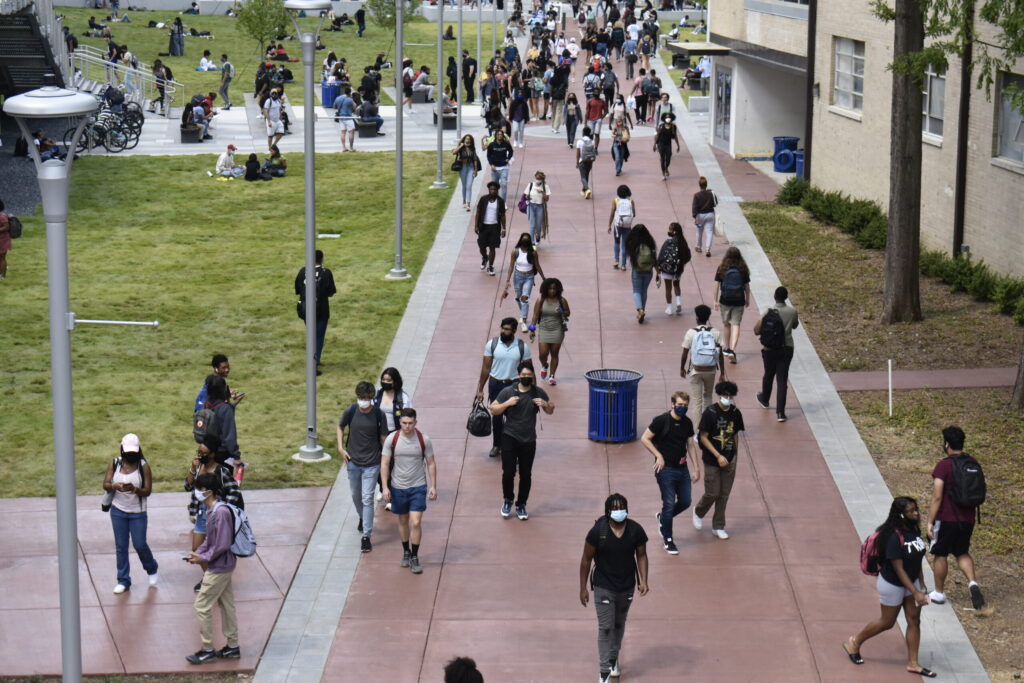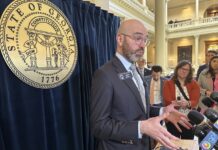
WASHINGTON (GA Recorder) — The U.S. House on Wednesday voted to overturn the Biden administration’s one-time student debt relief plan that is currently on hold, awaiting a Supreme Court decision expected within weeks.
Before the 218-203 vote on the resolution, the White House said President Joe Biden would veto it, arguing that the U.S. Department of Education has the legal authority to execute the one-time cancellation of up to $20,000 in federal student loan debt for borrowers who qualify and that overturning the policy “would weaken America’s middle class.” Two Democrats voted with Republicans, Jared Golden of Maine and Marie Gluesenkamp Perez of Washington state.
“This resolution is an unprecedented attempt to undercut our historic economic recovery and would deprive more than 40 million hard-working Americans of much-needed student debt relief,” the White House said in a statement. “Americans should be able to have a little more breathing room as they recover from the economic strains associated with the COVID-19 pandemic.”
The Congressional Review Act resolution now goes to the Senate, where once it’s sent to its relevant committee, any senator can make a non-debatable motion to consider it for a floor vote. The CRA procedural tool that can be used to overturn agency actions needs just 51 votes to pass, unlike the usual 60 votes required to defeat a filibuster.
Congressional Republicans have relentlessly attacked and lambasted the Biden plan as a “bailout” and already voted to block student debt relief under a bill last month to raise the debt ceiling along with spending cuts.
But the separate resolution voted on Wednesday forced vulnerable Democrats up for reelection in 2024 to take a public stance on the issue.
Introduced by Rep. Bob Good, Republican of Virginia, the resolution would also require the Department of Education to go back and charge borrowers billions in back interest from the pause on student loan repayments first implemented by the Trump administration in 2020 due to the coronavirus and extended several times.
“Student loan cancellation doesn’t actually make the debt go away. It simply shifts the cost from the student loan borrower to hardworking American taxpayers,” Good said on the House floor during Wednesday’s debate.
Tied up in court
The Supreme Court soon will issue a ruling on the fate of the debt forgiveness program, but during oral arguments in February, the majority conservative wing of the court seemed skeptical that the Department of Education could implement a program without explicit congressional approval that would cost more than $400 billion over 30 years.
The debt relief program was initially halted by an appeals court in late October following an emergency request from Republican Gov. Kim Reynolds of Iowa, and Republican attorneys general in Nebraska, Arkansas, Missouri, South Carolina and Kansas.
They argued that the president does not have the authority to wipe out debt, and it should be left to Congress to make that decision.
While the GOP has objected to the policy since the Biden administration made its announcement last year, congressional Republicans could only take action after a non-partisan congressional watchdog agency — the Government Accountability Office — concluded in March that the policy is subject to the Congressional Review Act.
The chair of the House Education and Workforce Committee, Republican Rep. Virginia Foxx of North Carolina, said during Wednesday’s debate that student debt cancellation is “regressive.”
Foxx said that Congress should instead be working on lowering the cost of college, and “not dumping hundreds of billions of taxpayer dollars on well-off college graduates to make the problem worse.”
She’s held several hearings about the administration’s student debt relief policy.
The Biden administration program would forgive up to $10,000 in federal student loan debt for single adults making under $125,000 a year, or under $250,000 for married couples.
Borrowers who received Pell Grants are eligible for an additional $10,000 in forgiveness of federal student loans.
Of those 26 million borrowers who applied for the program that launched in October, 16 million have been approved, according to the Department of Education.
The Federal Reserve estimates that more than 43 million Americans have student loan debt, which amounts to $1.76 trillion.
Rep. Tim Walberg, a Michigan Republican, said Wednesday that the policy is a “slap in the face for those who pay their bills or did not go to college.”
But pushing back against claims that only the wealthy would benefit, Rep. Suzanne Bonamici, an Oregon Democrat, said that 90% of the relief would go to borrowers who earn less than $75,000.
“This may be news to my colleagues, who continue to misrepresent that student debt relief will be a bailout for the rich,” she said.
Rep. Bobby Scott of Virginia, the top Democrat on the House Education and Workforce Committee, argued that student debt relief benefits every congressional district, regardless of political party.
“There are many challenges we have in higher education that demand our attention. Rising costs of higher education. The student debt crisis. The eroded value of the Pell Grant. Mental health issues. The list goes on,” he said.
“But instead of addressing these challenges, we are trying to force through a resolution that hurts tens of millions of student borrowers and their families, an average of almost 100,000 (borrowers) in each of our districts.”







